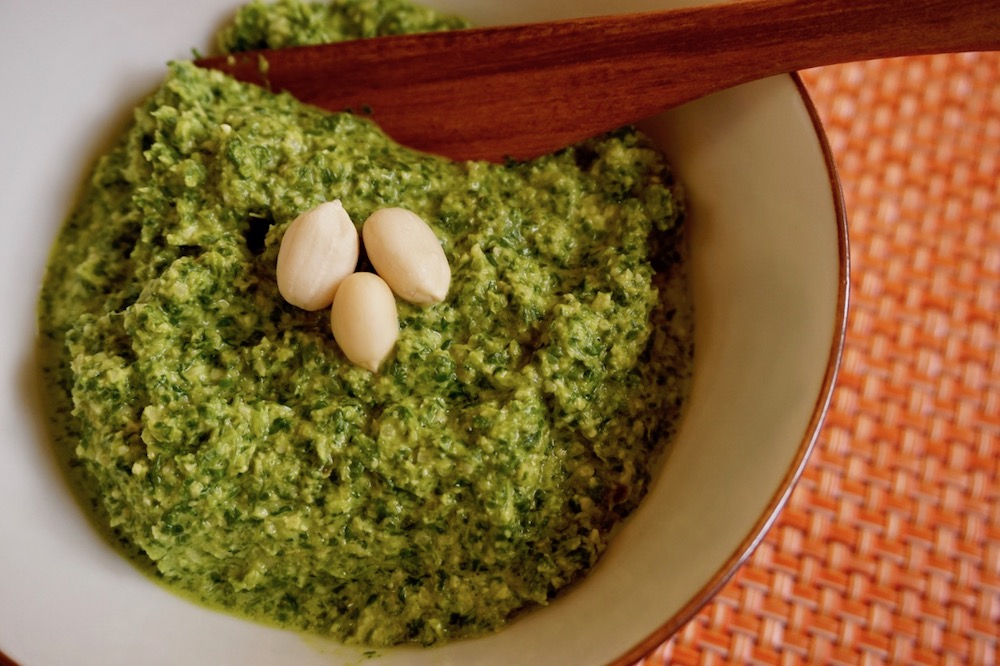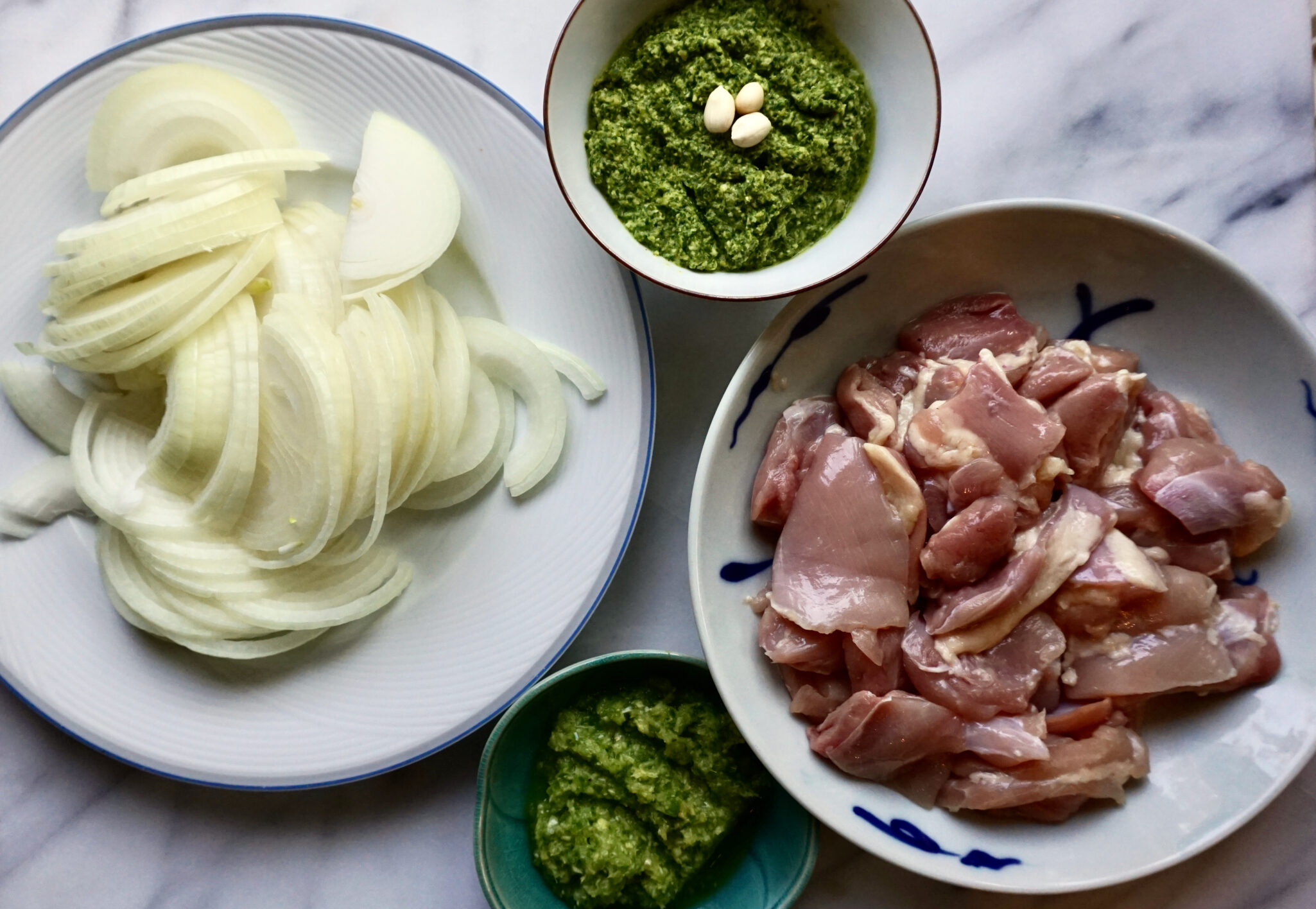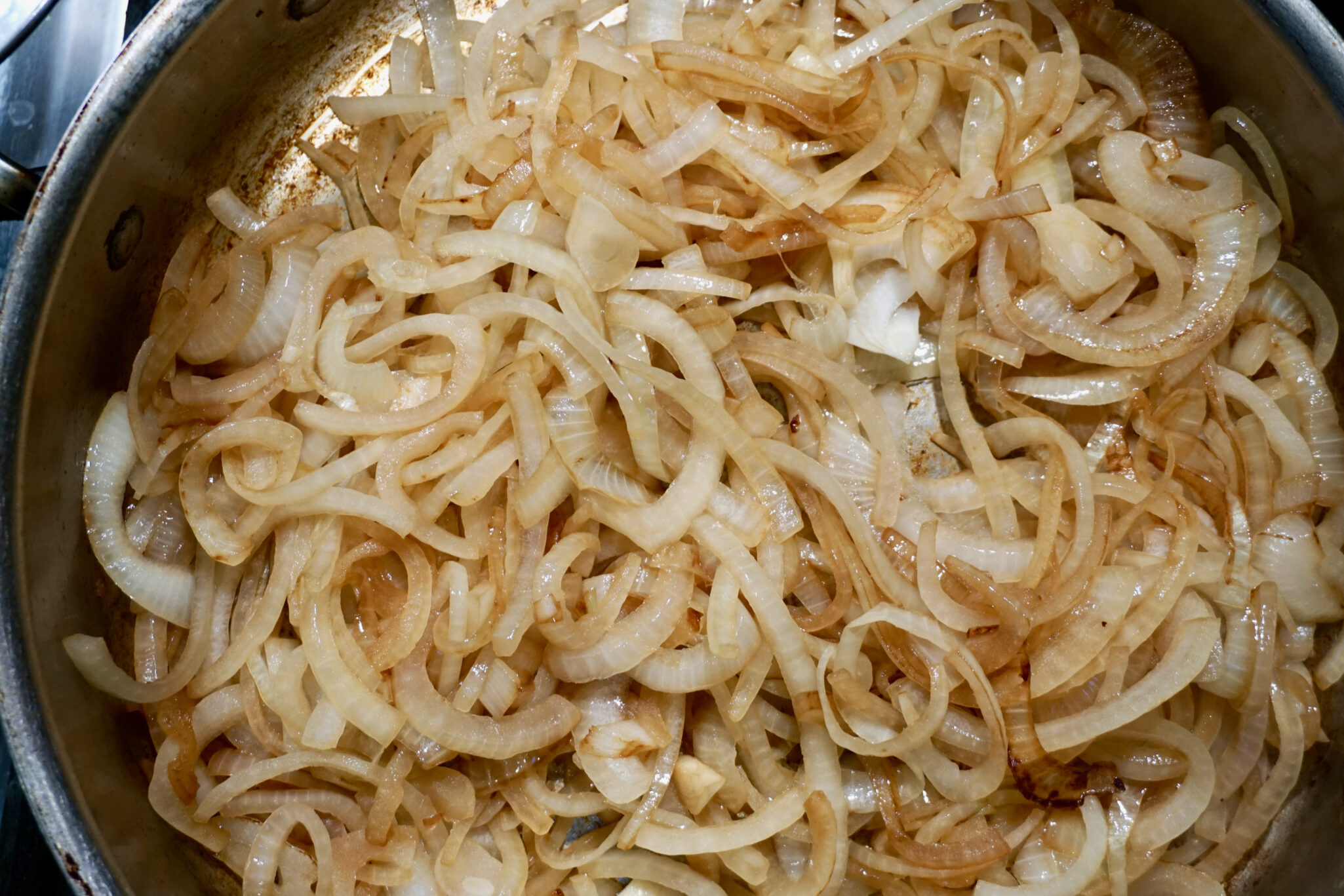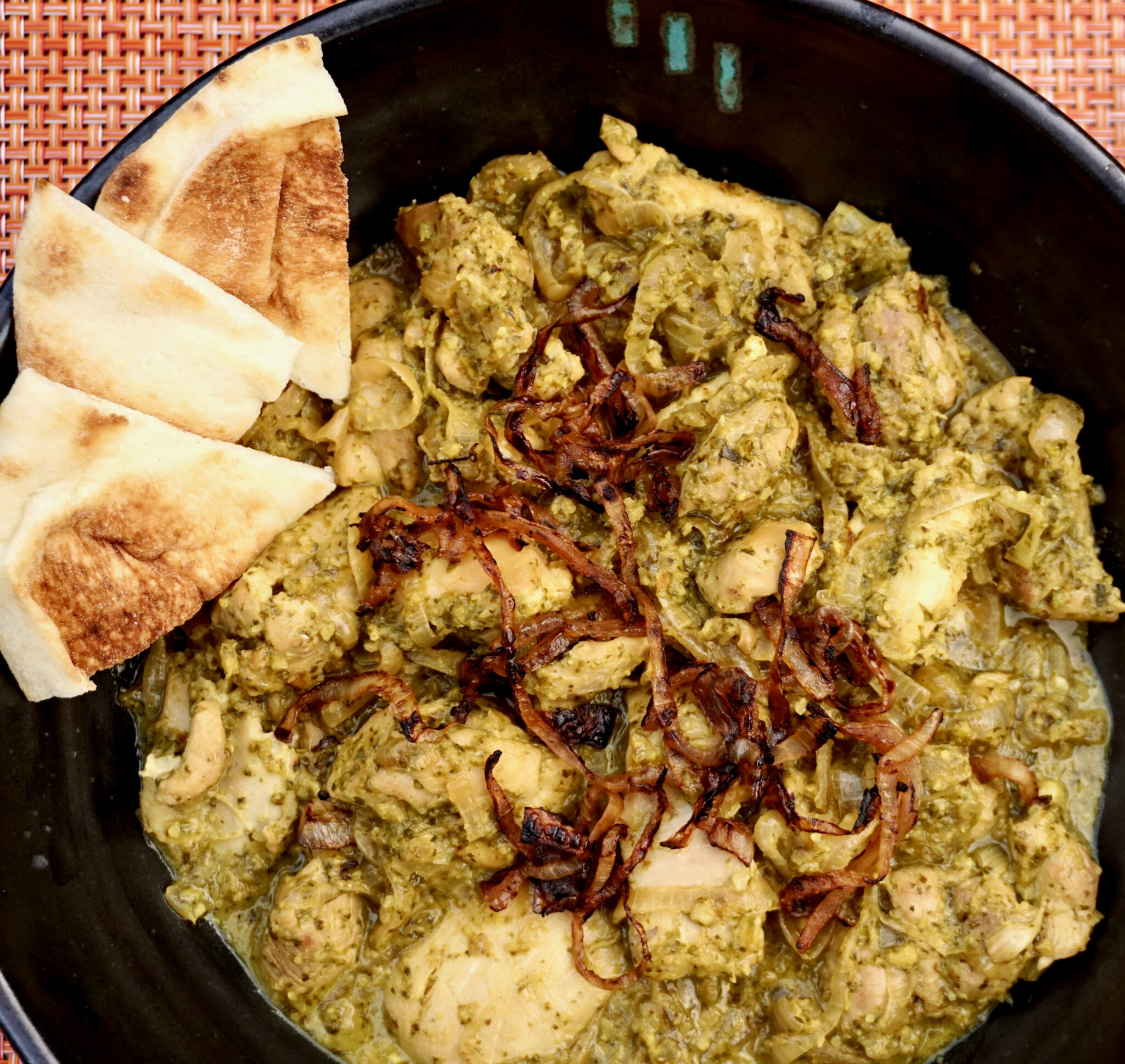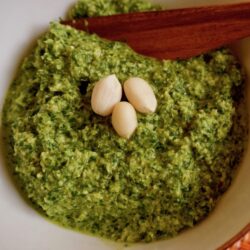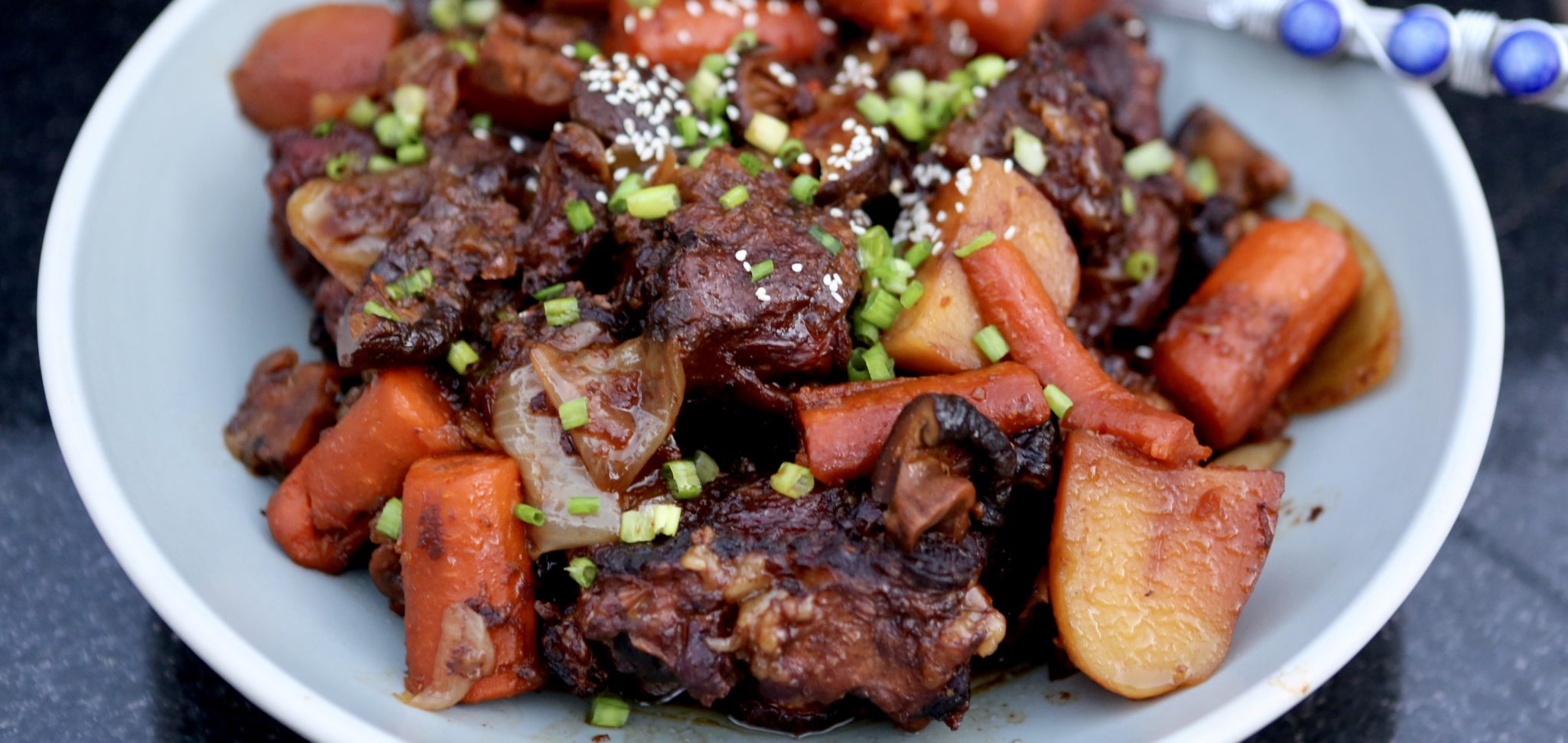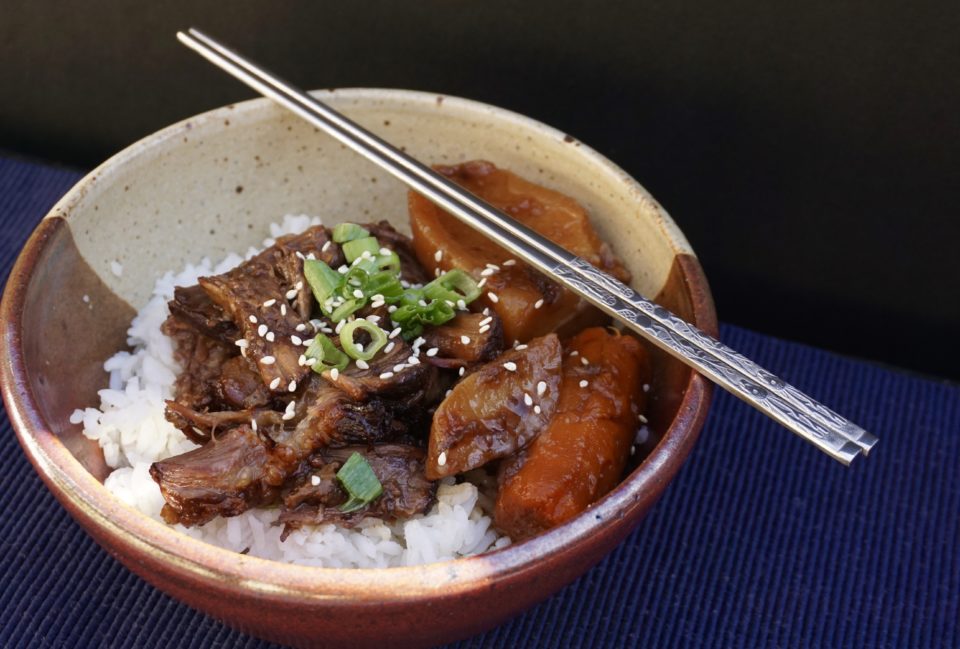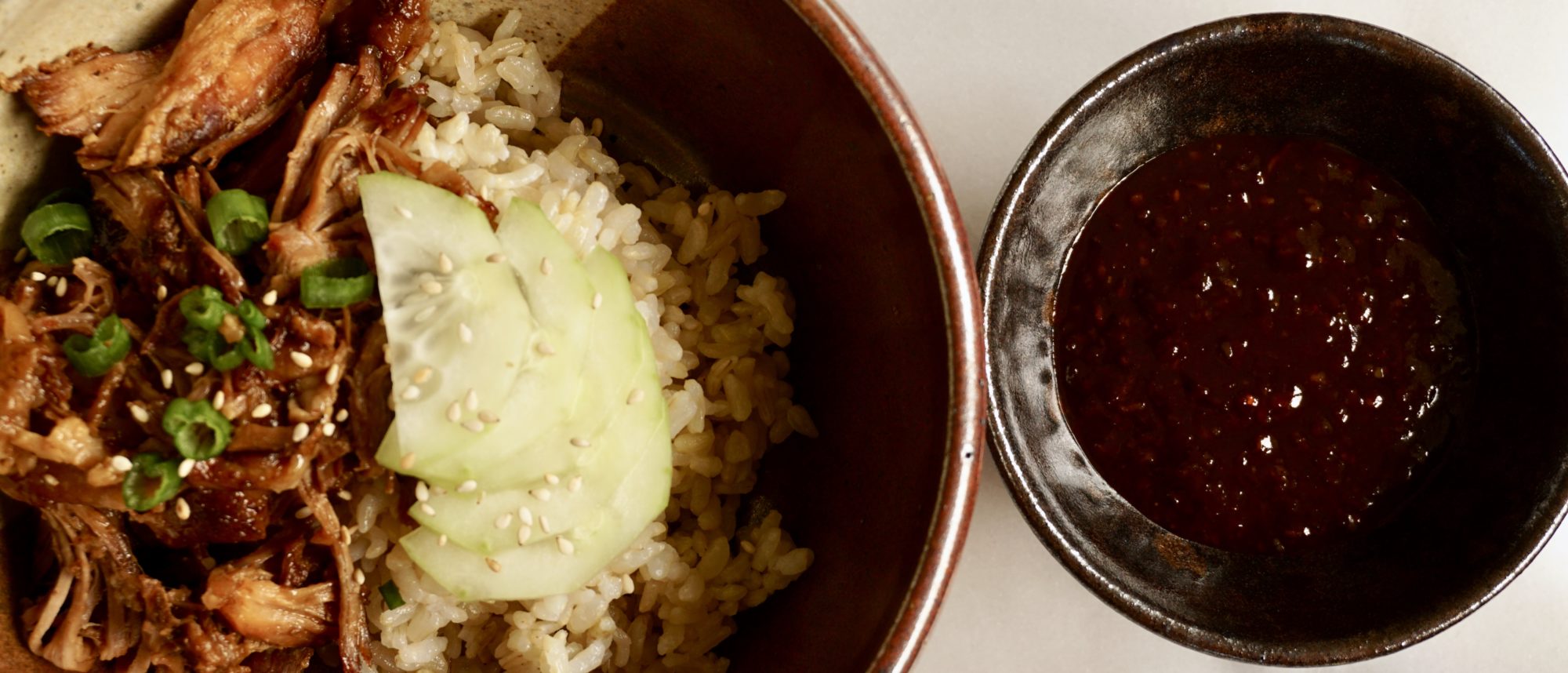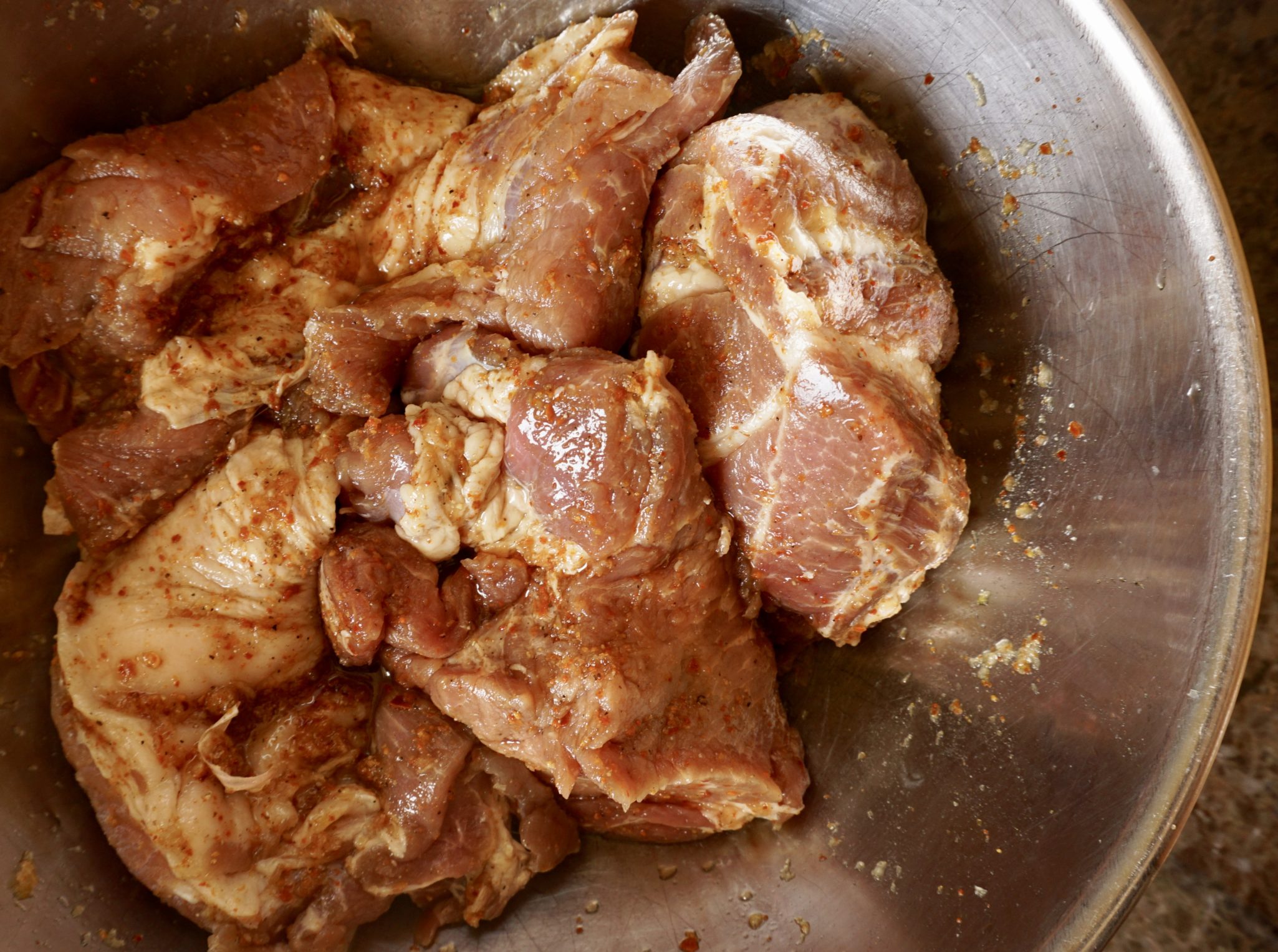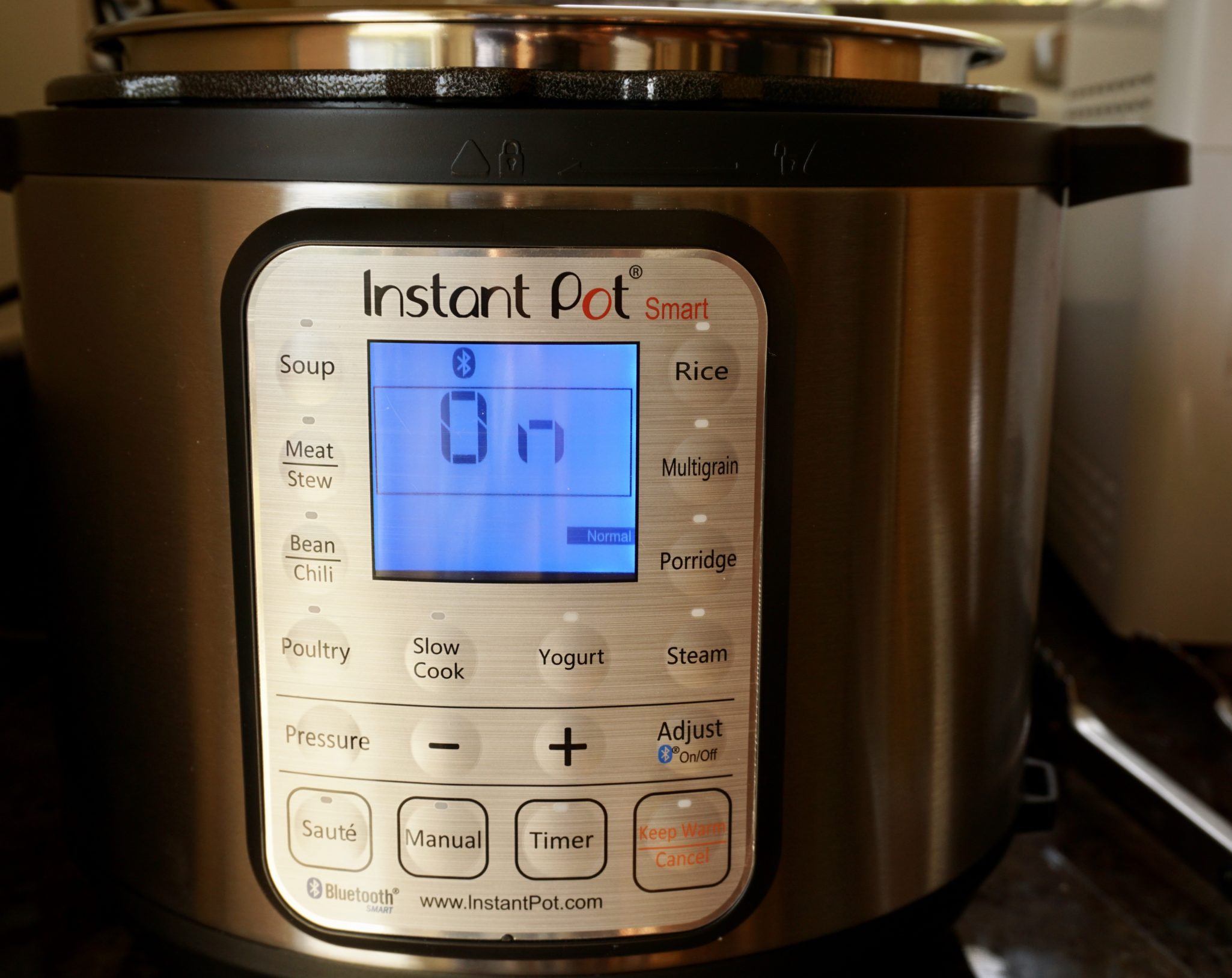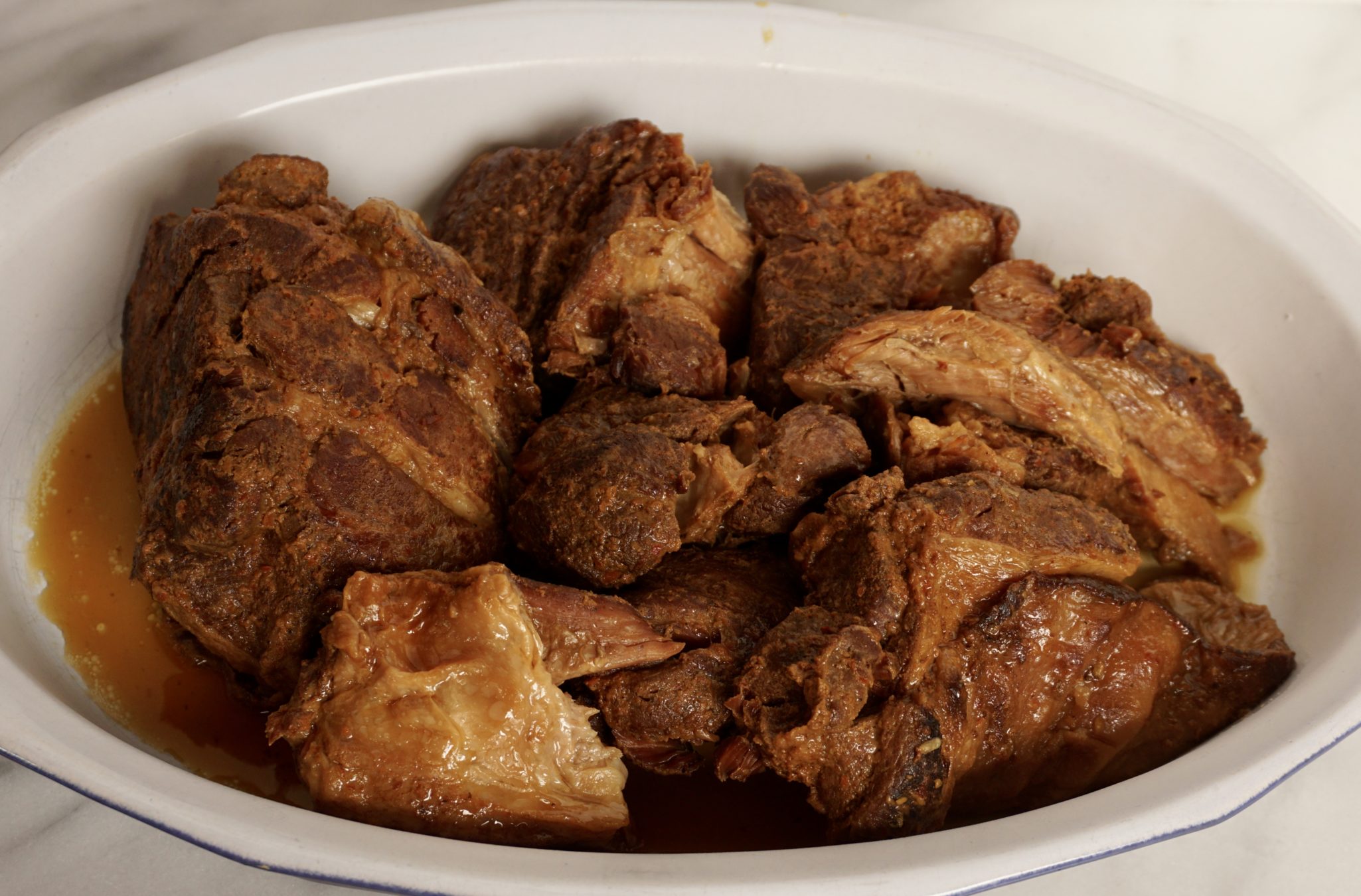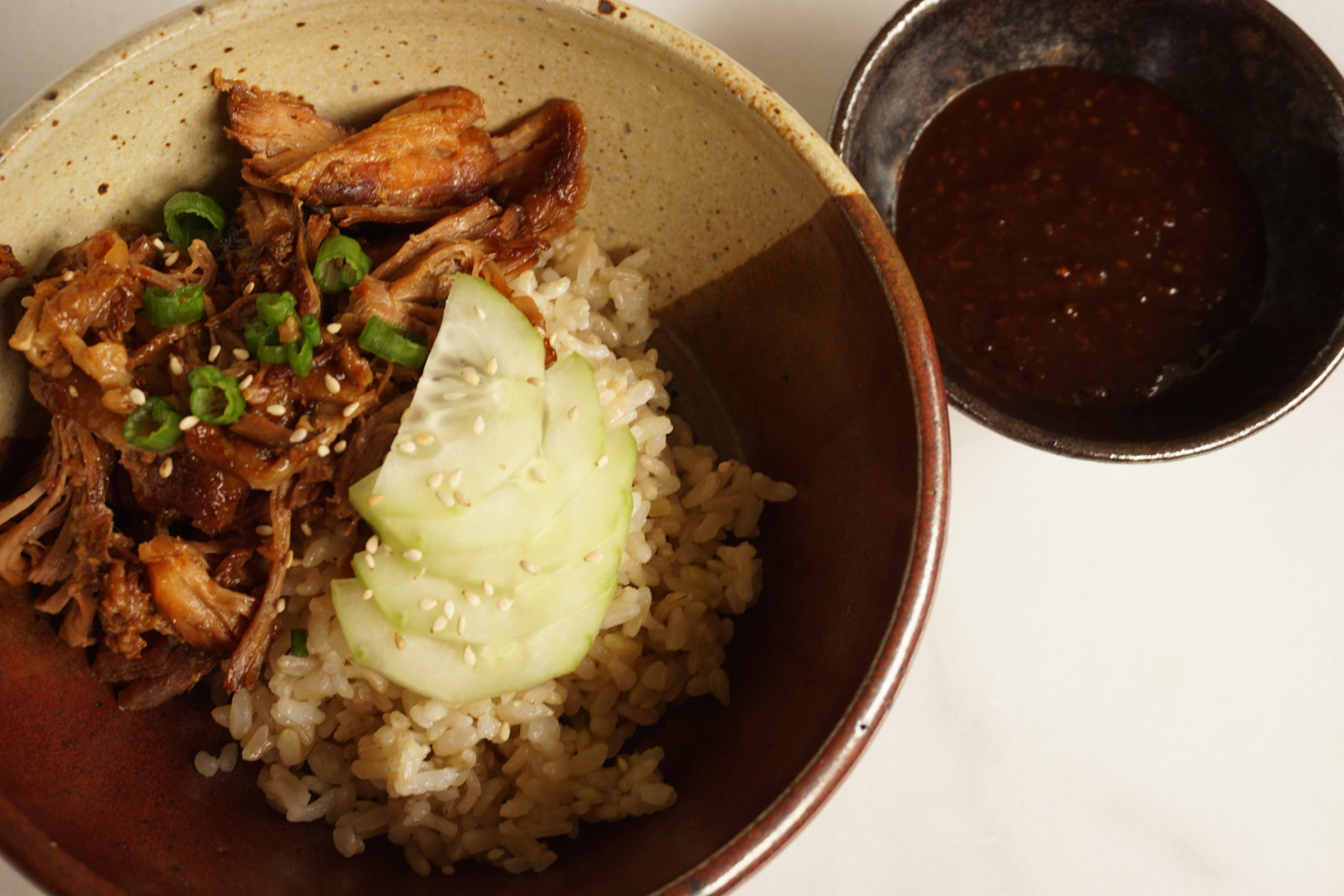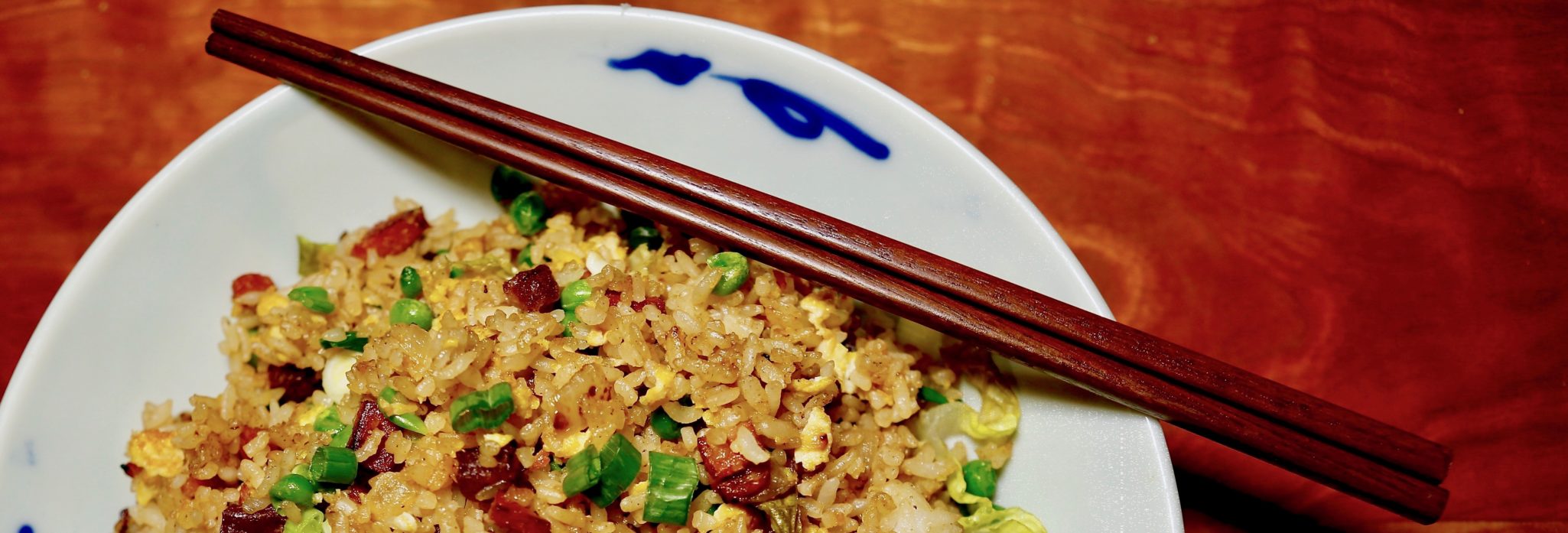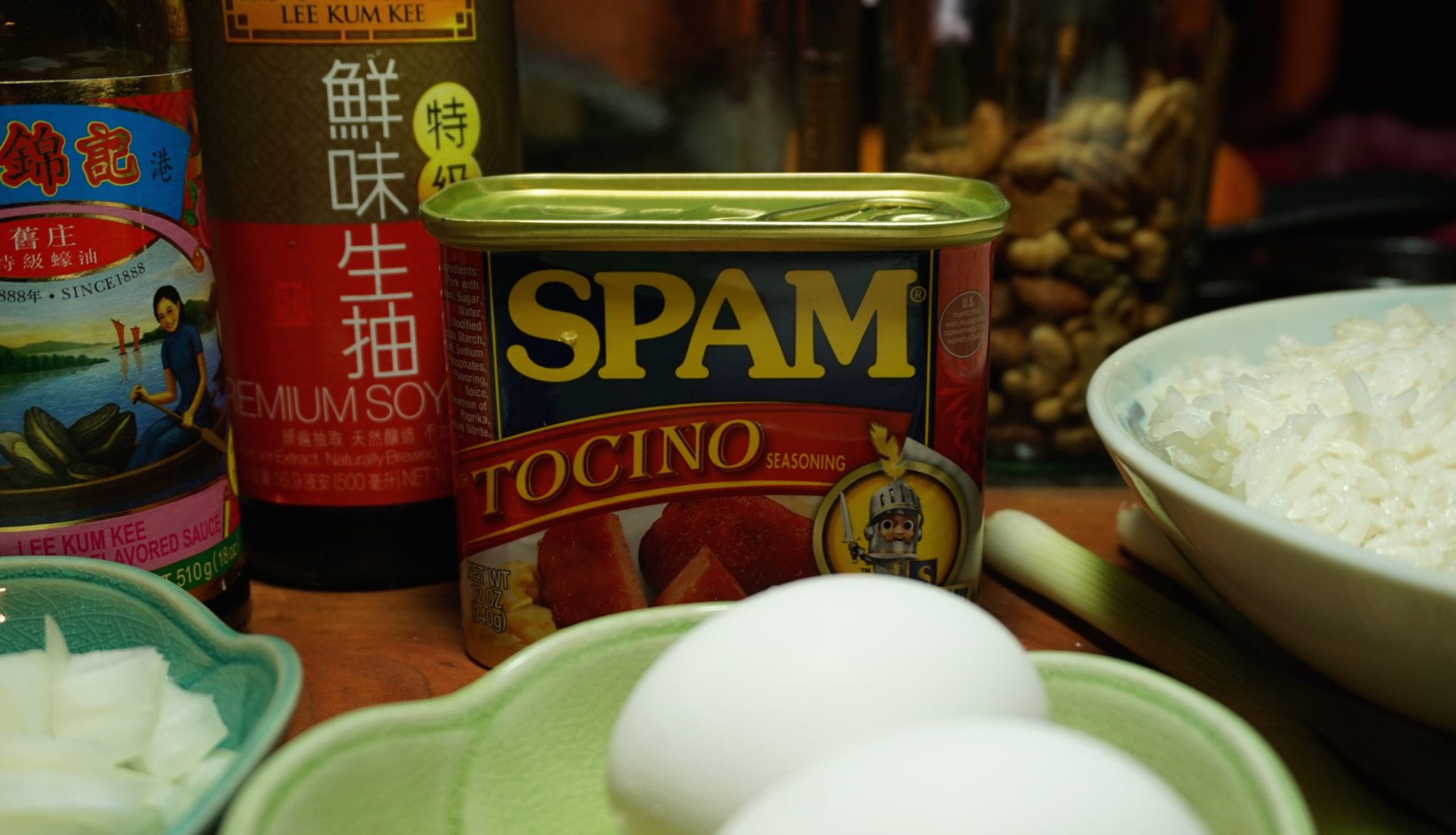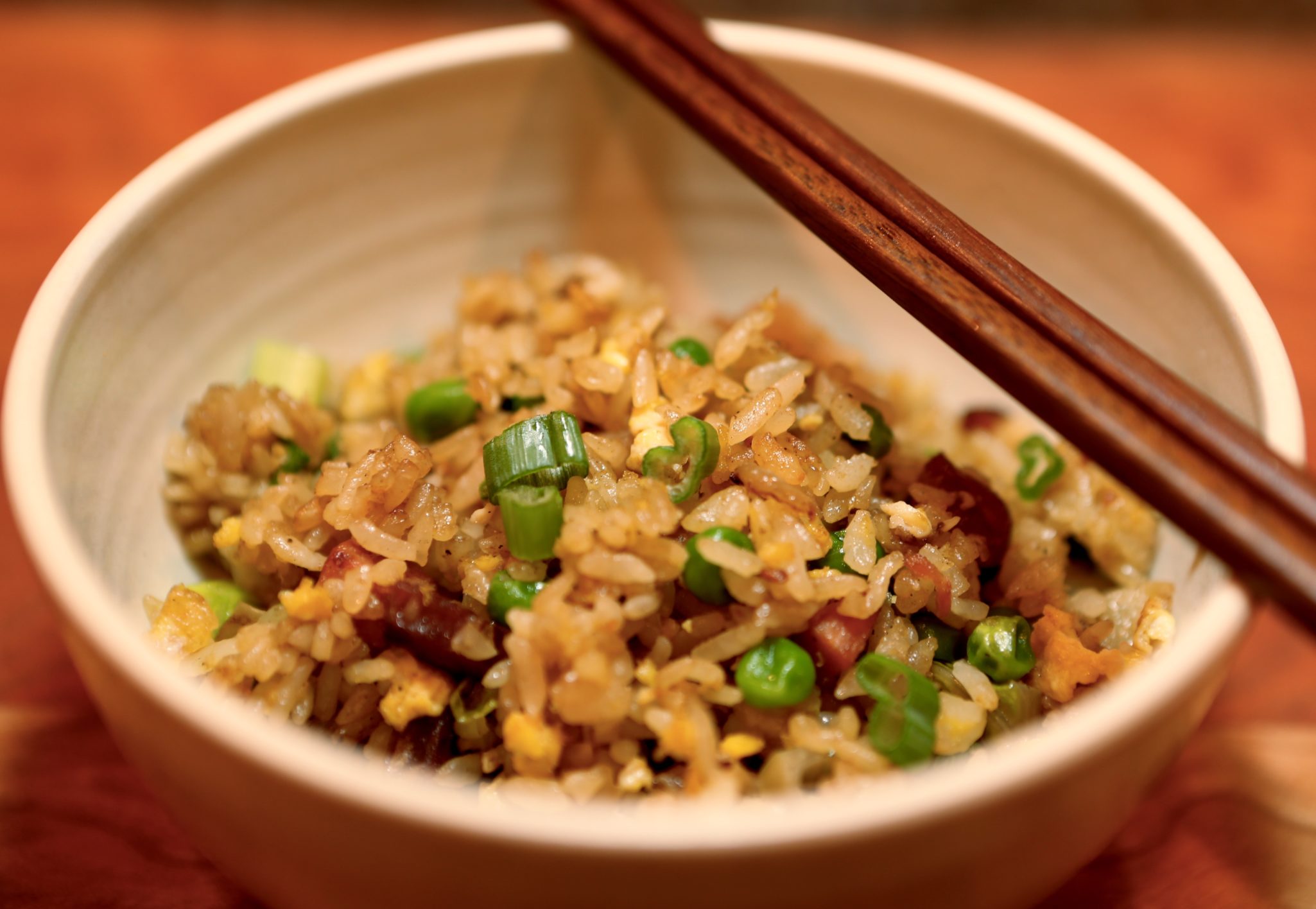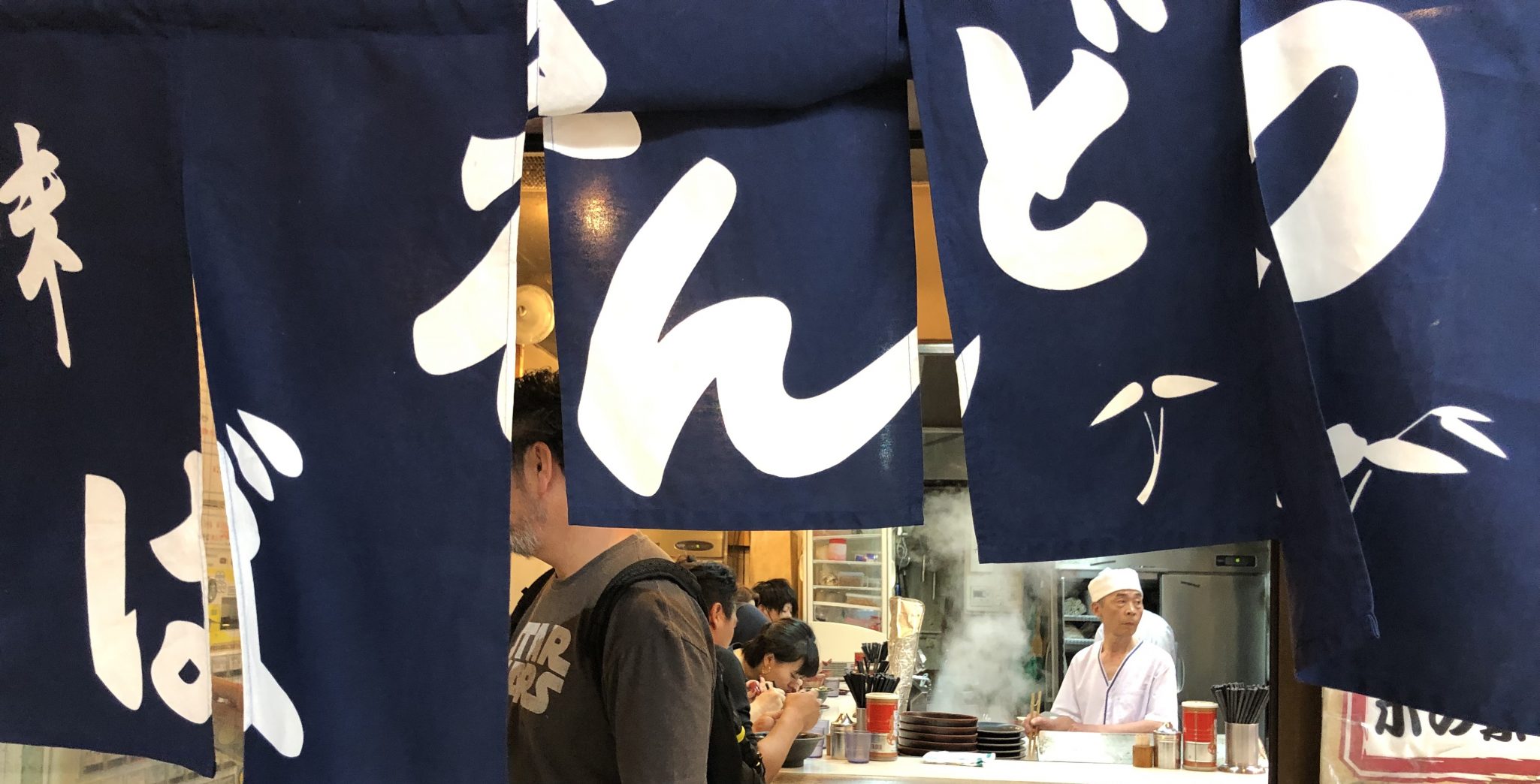
Bowled Over, Udon Want to Miss My Newest Obsession (Udon)
Hang on to your hats, imagine Times Square, with all its neon signs and flashing lights dedicated solely to FOOD. Yep, that’s the only way I can describe the Dotonbori area of Osaka. Swarms of people, whose sole purpose is to find all things delicious to eat. A giant 3-D crab, or shrimp or potsticker over the door of a dining establishment making it easy to figure out their specialty. The delicious aromas swirling around, changing with every step as they walk by tempura houses, ramen joints, crab feasts and yakitori vendors.
Welcome to Crazy Town for food

Yep, we bit. Drawn by the people, hypnotized by the lights, we ate our way down the street. We tasted Takoyaki, octopus cakes, (not really cakes, I just couldn’t bring myself to call them balls). Think Ebelskiver with octopus bits. We munched on skewers of yakitori, sampled matcha and black sesame soft serve and found taiyakis, fish-shaped cakes filled with red beans.
Udon want to miss the noodles
Our last stop was the perfect cap for the evening. Walking back to our hotel we found a local shop in Namba with a trio of old cooks serving up delicious udon noodles. We decided what toppings we wanted on our noodles, slipped our yens (=TWO DOLLARS A BOWL) into the machine, and handed the tickets to the chef. Minutes later 3 hot steaming bowls of udon were placed in front of us.

Unlike ramen, the noodles are much thicker with a definite chew. The broth is flavorful but clear and light, fish-based, different than the rich, heavy broth that you find with ramen. Toppings are simple-fried tofu (abura-age), a raw egg that cooks in the steaming hot broth, a single tempura shrimp, or a clump of shredded seasoned beef and a sprinkling of green onion. We slurped our noodles and tipped the bowls to spoon out the last drops of broth. You’d think we hadn’t eaten all day. Ha!

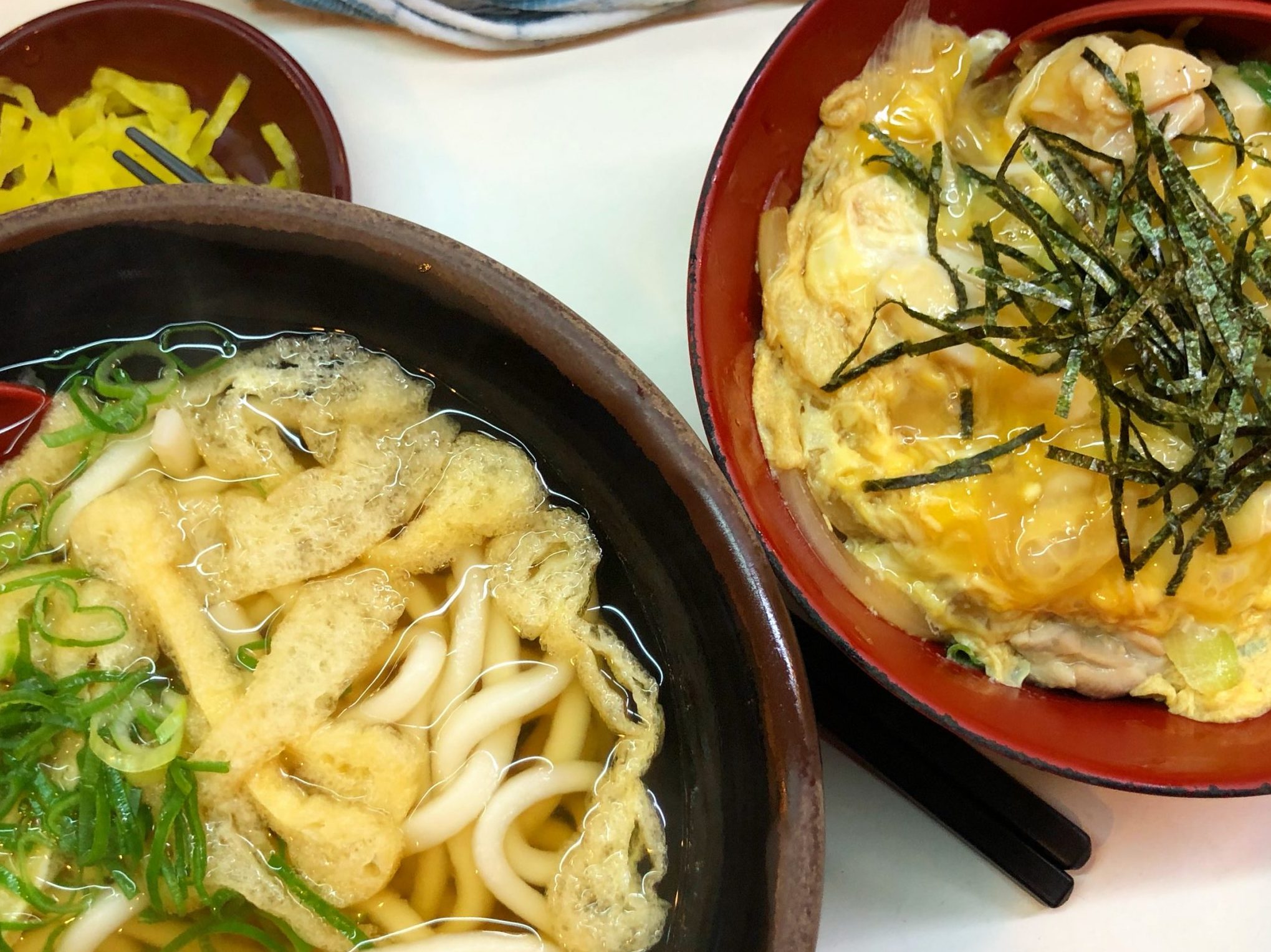
Thus My Obsession with Udon Began…
As soon as I got home plus 12 hours of catch-up sleep, I pulled out my copy of Japanese Soul Cooking by Tadashi Ono. A gem of a book on homey Japanese comfort food. I flipped to the udon section and then I was off to the market to look for ingredients. I had purchased a delicious Dashi base in Tsujiki Market in Tokyo, perfect for my udon. To make your own Dashi here is a great primer from Just One Cookbook. OR, Kikkoman makes a soup base Hon Tsuyu that makes a pretty good dashi broth base.
Working down my list, next the udon noodles. Udon comes fresh, frozen, and (if you can’t find fresh or frozen udon) dried. Sigh, just not the same. I also found abura-age or fried tofu skin which is used to make Kitsune Udon. The fried tofu skins are flattened and seasoned with soy sauce and placed on top of the udon. Really delicious, and substantial enough for a satisfying vegetarian bowl of udon. It can be difficult to find abura-age though and in that case, Inari-age, seasoned deep-fried tofu pouches used to make Sushi Rice balls, is a convenient and easy substitute. No need to season, just plop them on top of the cooked noodles. Confused about tofu? Serious Eats’s Tofu primer is your ticket. The carnivore in me though, bought some thinly sliced beef (sukiyaki beef is perfect) to make Niku Udon, yummo.
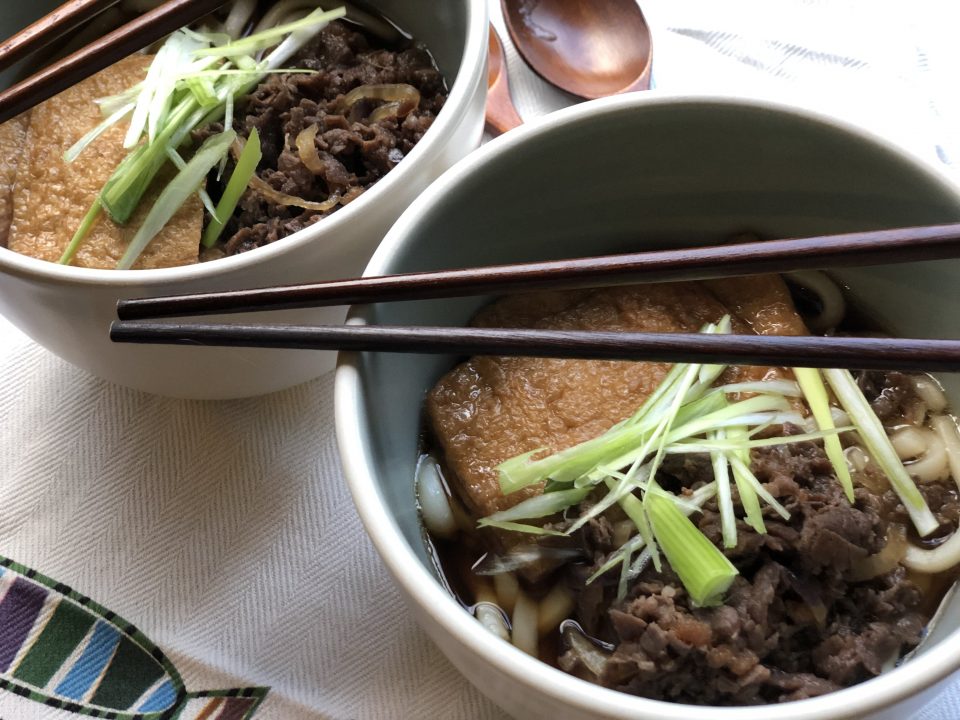
Making udon is very approachable. It’s perfectly acceptable to start with a broth made from Dashi bags and pre-made noodles.
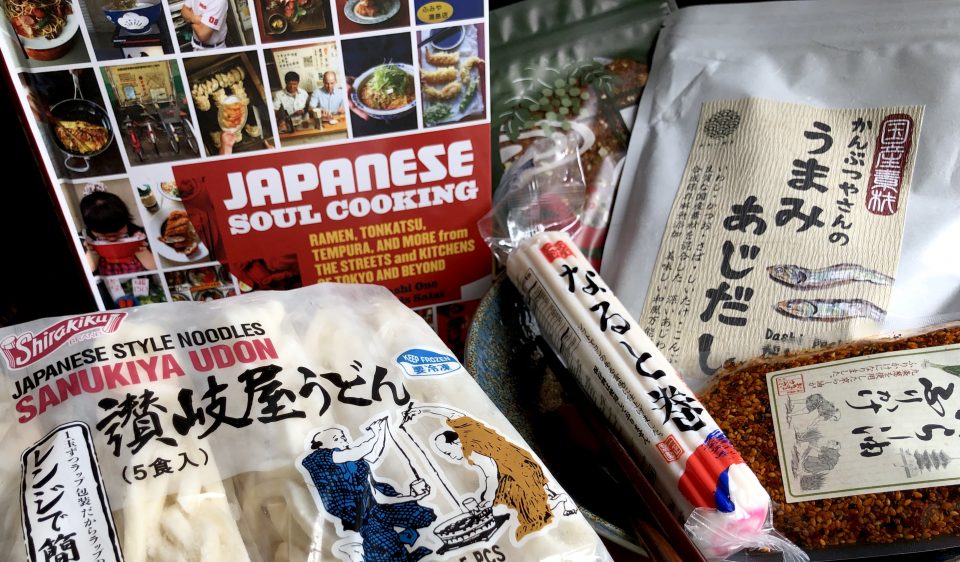
Travel to Eat
People travel to buy clothes and souvenirs, I buy food, Dashi, Furikake’, Soba Boro cookies…yep, travel driven by food.
Studying up, here’s the scoop, on udon.
I used Dashi packets to make the Tsuyu. This is your base, add soy sauce and mirin to flavor the Tsuyu.
Optimally, use Sanukiya noodles, most likely found in the frozen section of your favorite Asian market. The noodles are a bit firmer and hold up well. The pre-cooked noodles only take a couple of minutes to separate and heat in hot water, presto-dunzo. There are Korean versions of Udon noodles too, and they are very good.
Toppings for udon can be as simple as an egg, gently poached for the raw egg-squeamish, Abura-age, tempura, fishcake, or really ANYTHING you feel like putting on your noodles!
Kitsune Udon
Ingredients
Abura-age (Tofu)
- 1 package Abura-age or 4 Abura-age
For Simmering Abura-age:
- 3/4 cup dashi soup stock
- 2 Tbsp. sugar
- 1 Tbsp. soy sauce
- 1 Tbsp. mirin
For Soup:
- 5 cup dashi soup stock
- 3 Tbsp. mirin
- 2 Tbsp. soy sauce
- Salt adjusting the amount of salt to your preference
Noods and Garnishes
- 4 packages pre-boiled udon noodles
- Optional: 4 slices kamaboko fish cake for topping
- green onions, sliced
Instructions
- Heat dashi, mirin, sugar, and soy sauce in a medium pan and bring to a boil. Adjust the flavor with salt as you like.
- Simmer aburaage in the soup on low heat until the liquid is almost gone. Set aside.
- Boil water in a large pan and heat udon noodles as indicated in the package.
- Drain the udon and divide into four bowls.
- Pour the hot soup over udon noodles.
- Top with seasoned aburaage and kamaboko slices.
- Garnish with green onions
OR buy the more readily available Inari age or seasoned tofu pouches and just plop those straight into your bowl. Inari age is the fried tofu pouches used to make Inari Sushi
Or the carnivore delight…
Niku Udon
Ingredients
Niku Ingredients
- 1/4 cup sake
- 1/4 cup sugar
- 1/4 cup soy sauce
- 1 pound sukiyaki beef or thinly sliced flank steak, ribeye
- 1/4 yellow onion, thinly sliced optional
Soup
- 6 cups udon tsuyu*
- 4 bricks fresh or frozen udon noodles can substitute dried Sanuki Udon
- 1-2 green onion thinly sliced
- Shichimi togarashi
Udon Tsuyu
- 6 cups dashi
- 1/2 cup mirin
- 1/2 cup Usukuchi soy sauce light soy sauce
- 1/2 - 1 teaspoon salt or to taste
Instructions
Tsuyu
- Prepare broth and keep warm.
Beef
- Combine sake, sugar and soy sauce in a bowl and stir well. Add beef and mix together, coating meat well. Marinade beef for 10 minutes.
- Preheat dry non-stick skillet or well seasoned wok/iron skillet. If including onion, saute onion slices just until soft before adding the beef. Add beef and marinade to skillet. Spread beef in skillet to cook evenly. Cook over high heat until beef has lost its pinkness and most of liquid has evaporated, approximately 5 minutes. Remove from heat and set aside.
Udon Noodles
- Bring large pot of water to a boil. Add each packet of noodles. gently spread noodles out. When water comes back to a boil, the noodles are done. Drain well and divide among bowls.
- Pour hot broth over noodles. Divide beef among bowls, garnish with green onions and shichimi togarashi. Serve immediately.
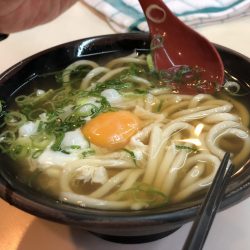
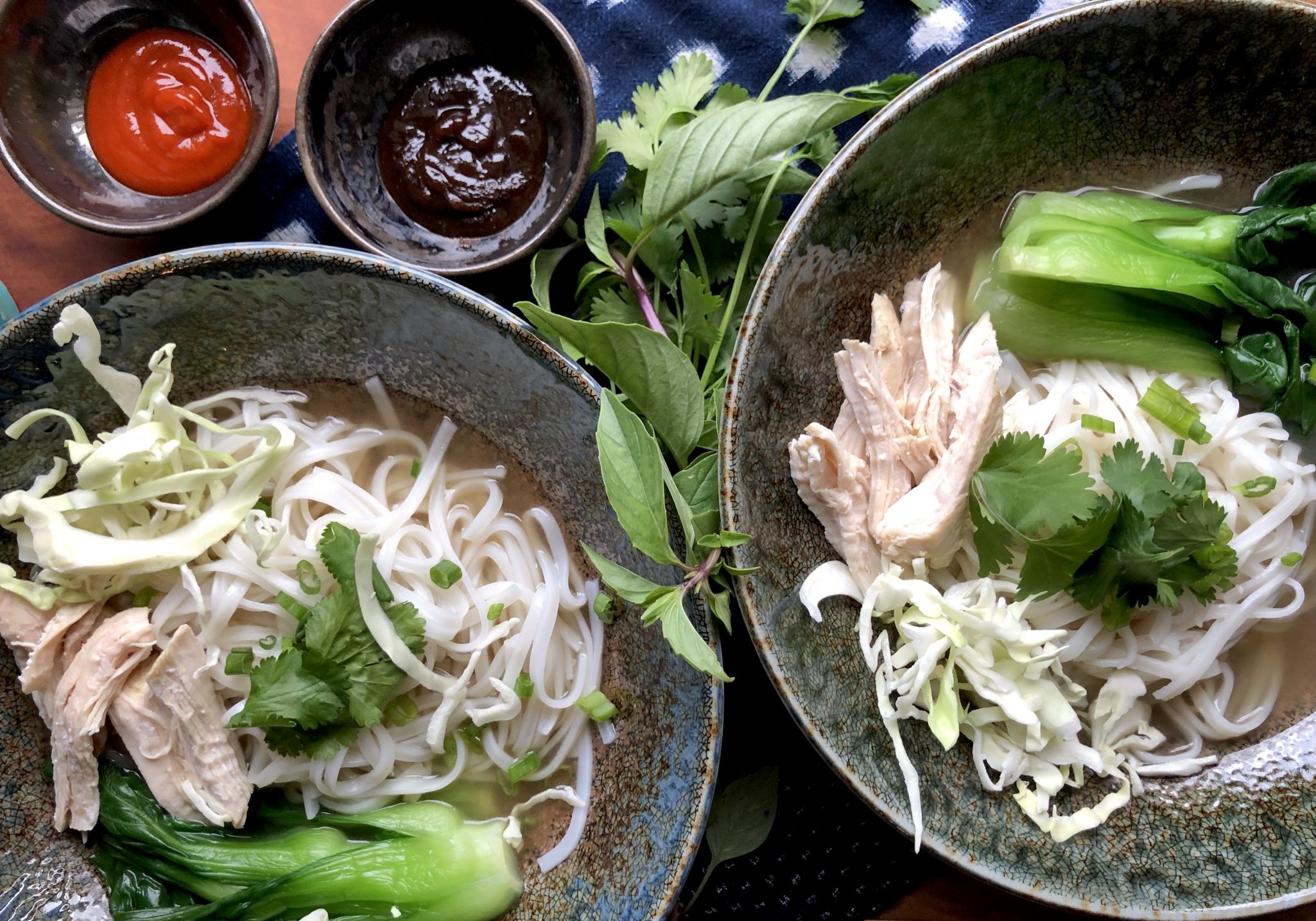
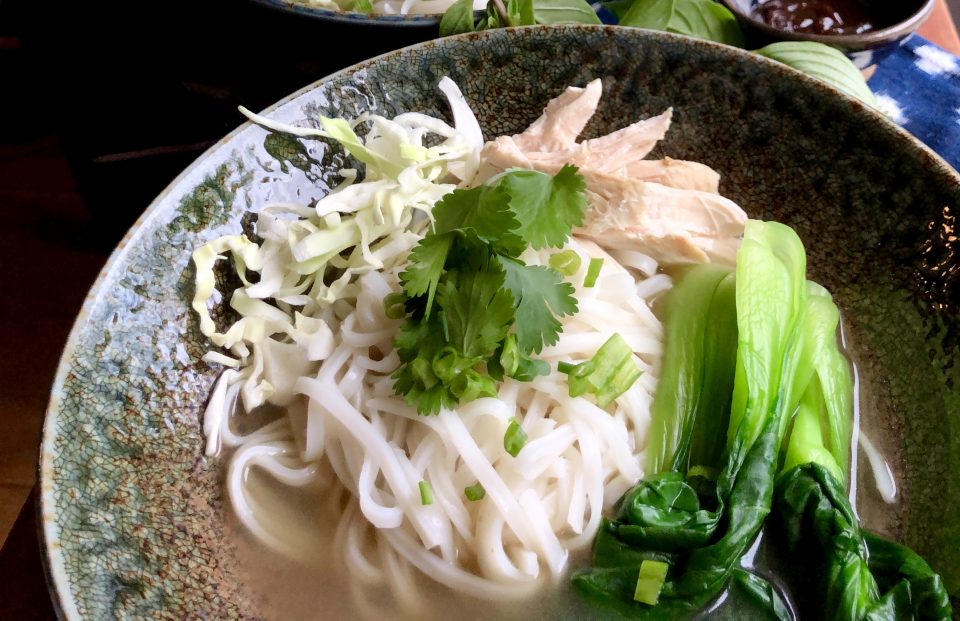
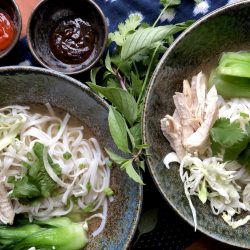
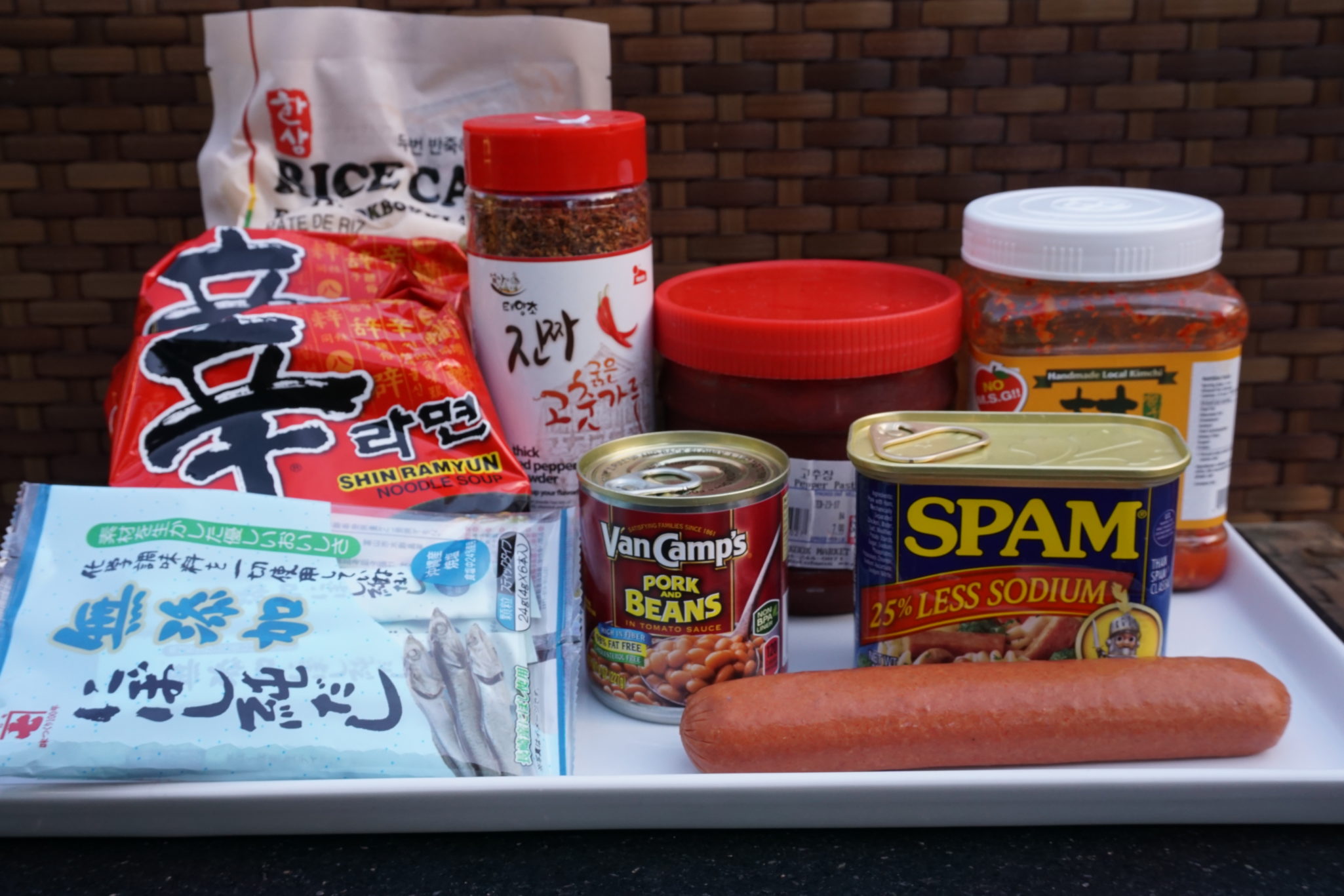
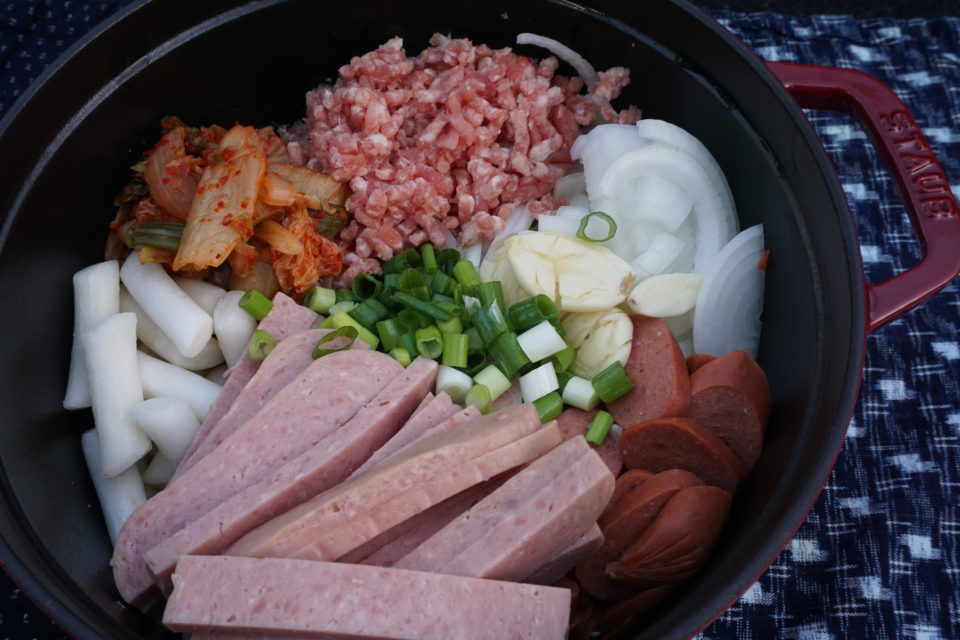
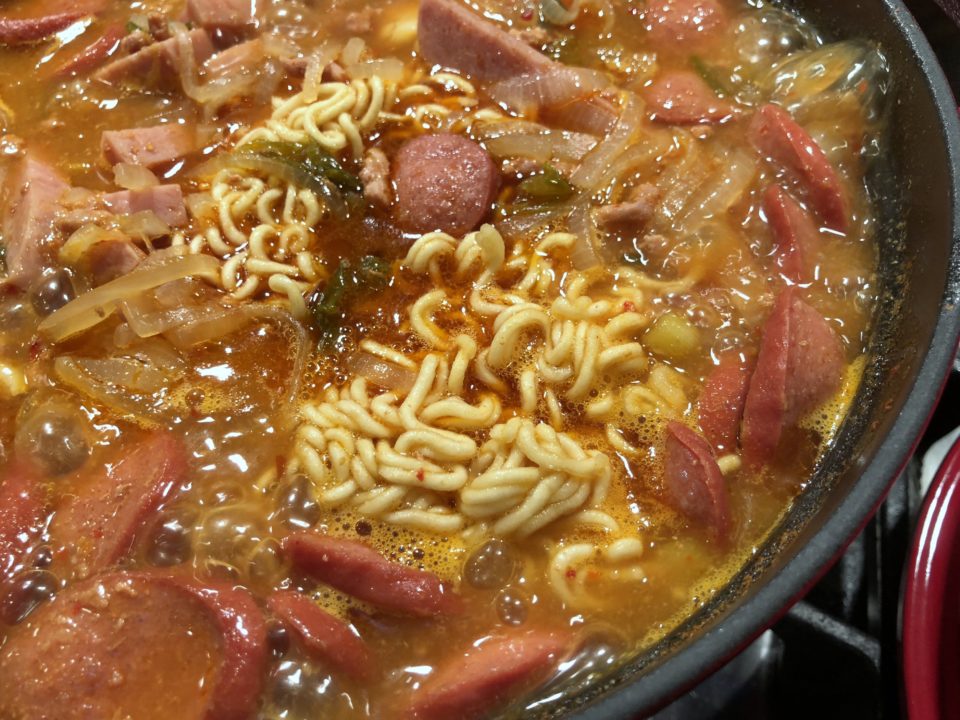
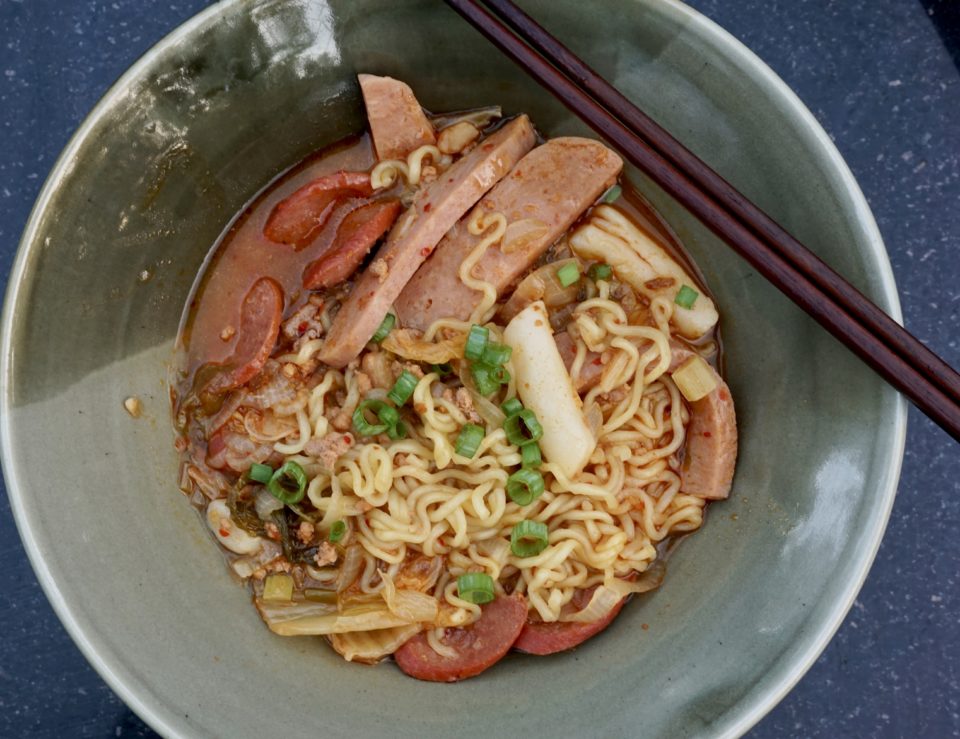
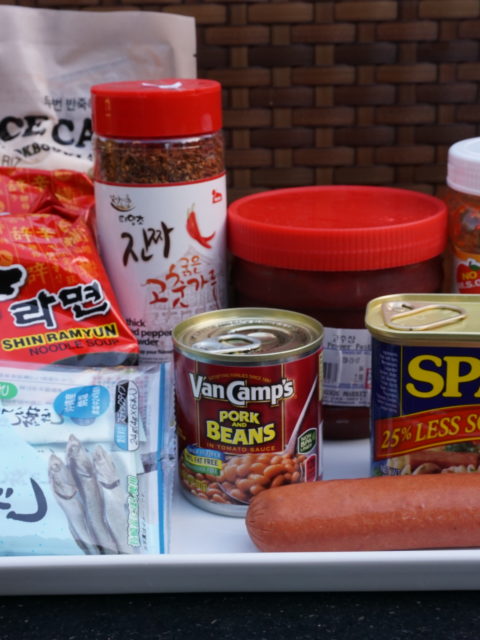

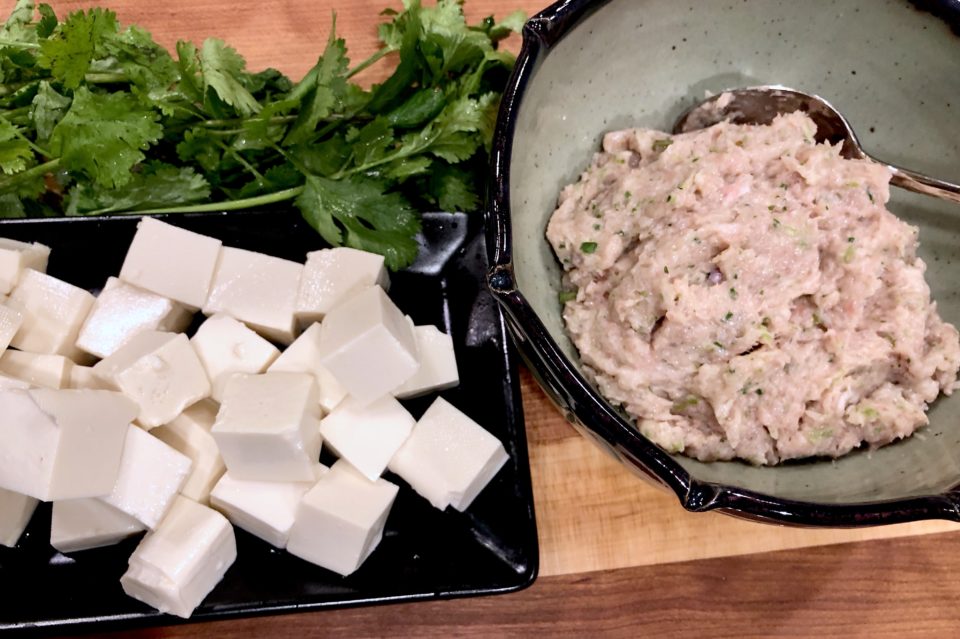
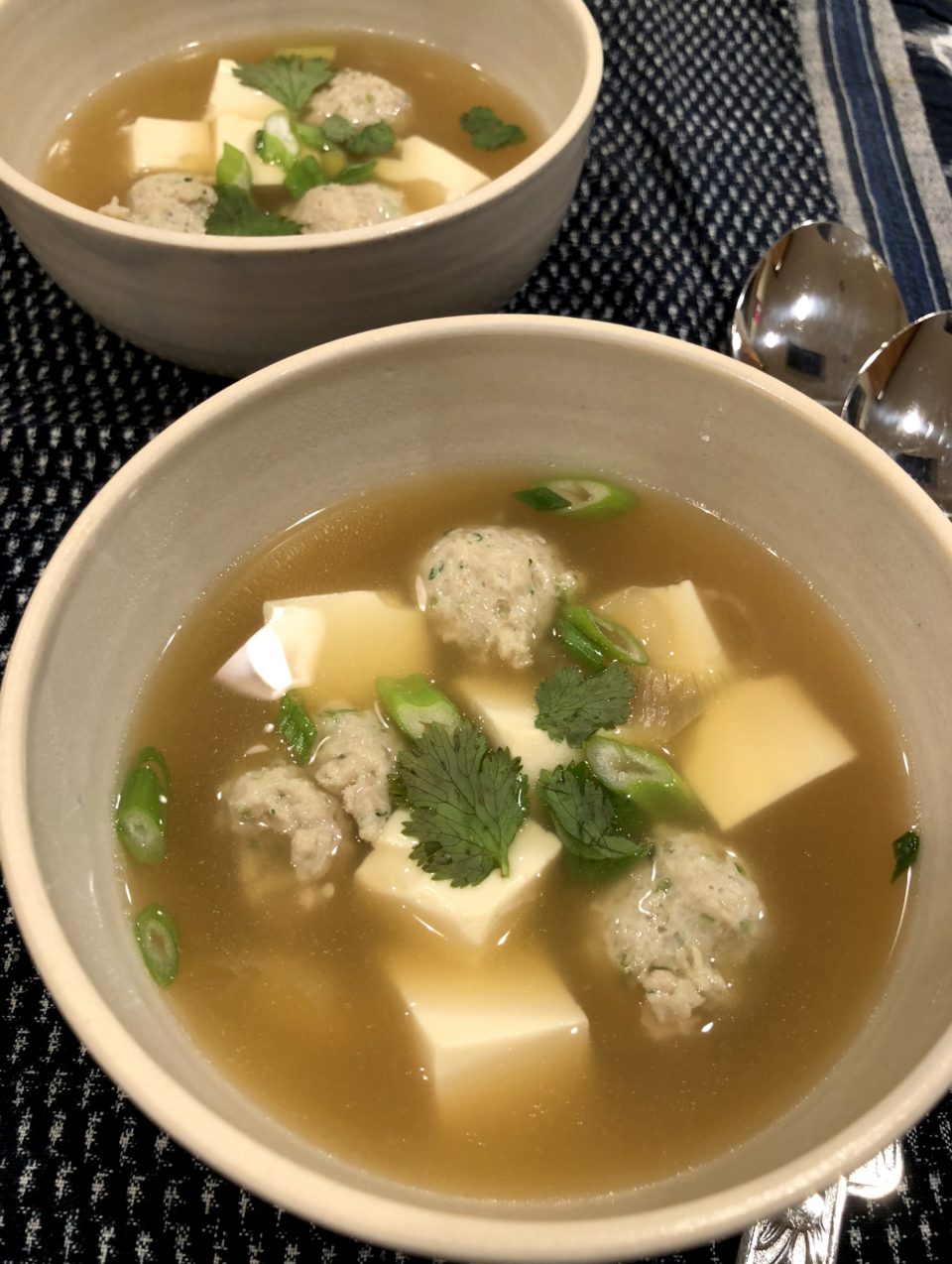
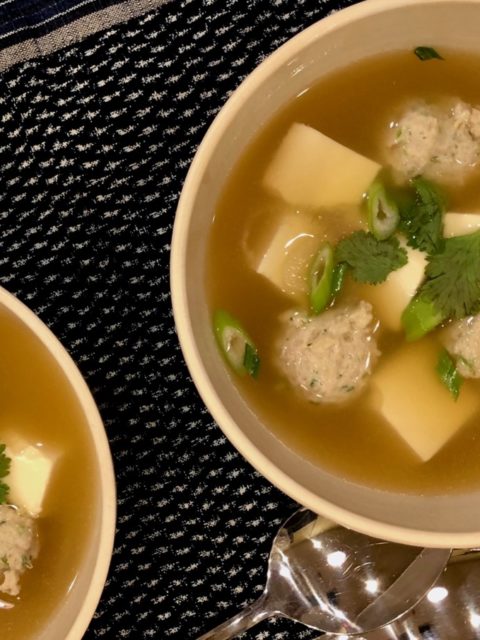

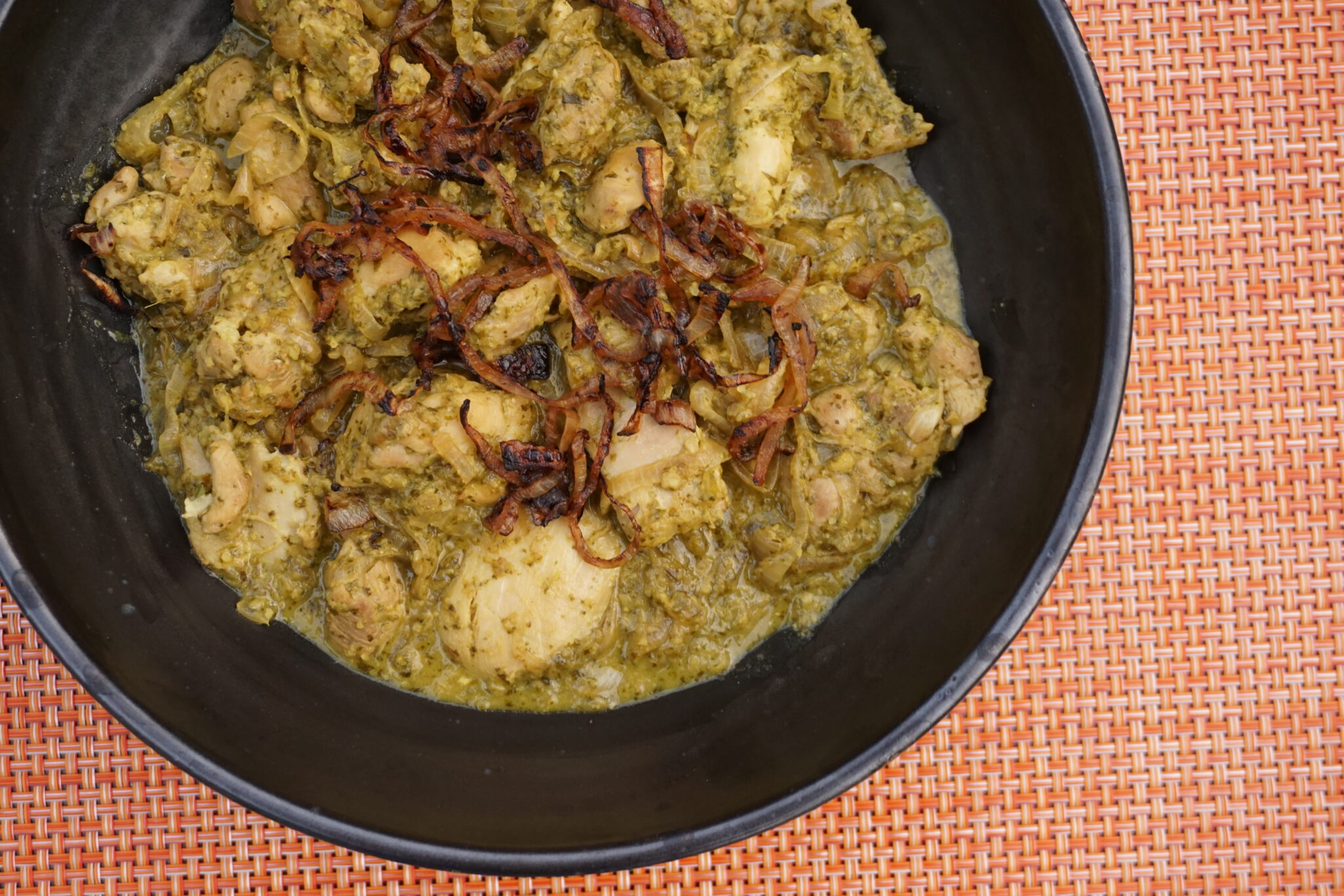 Good morning Mr. Phoods:
Good morning Mr. Phoods: